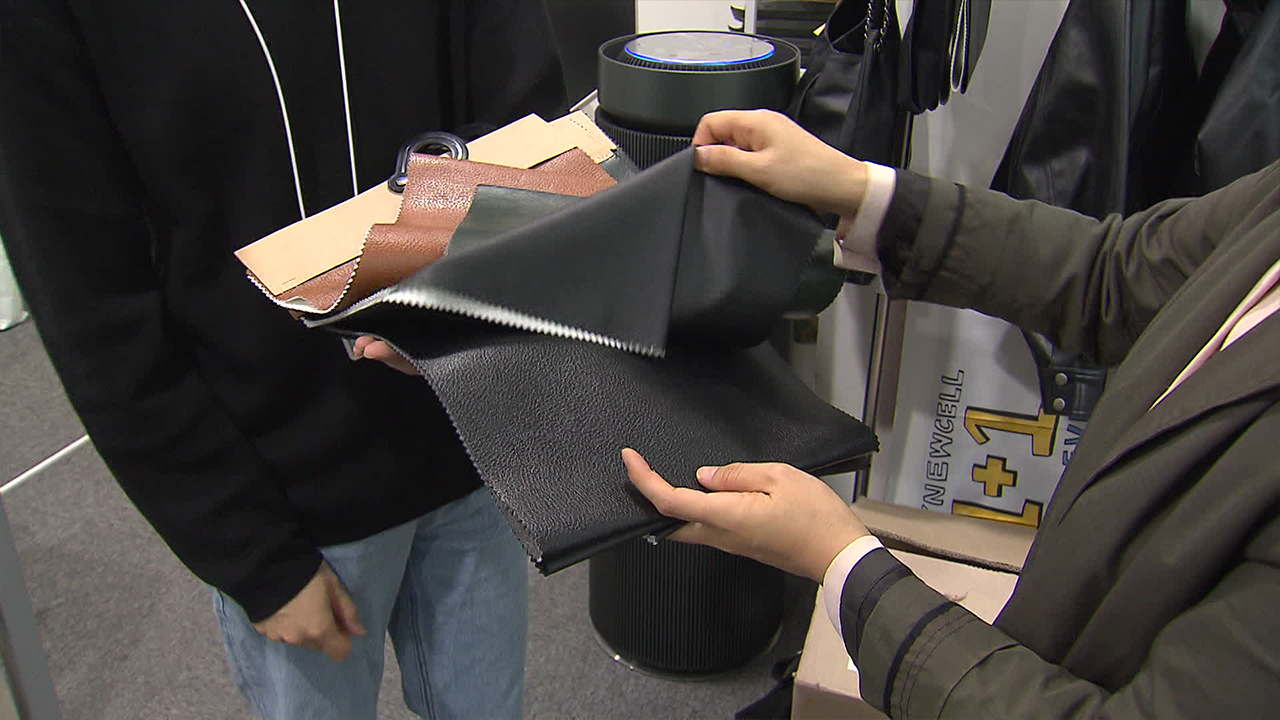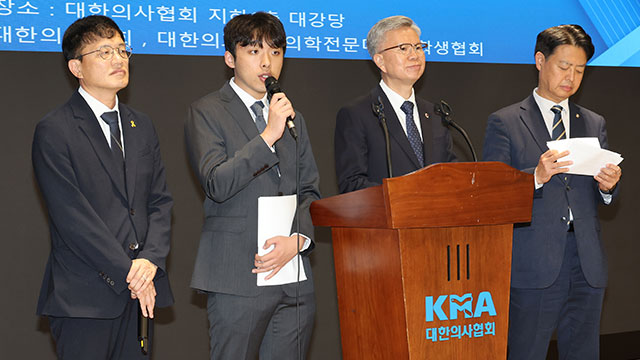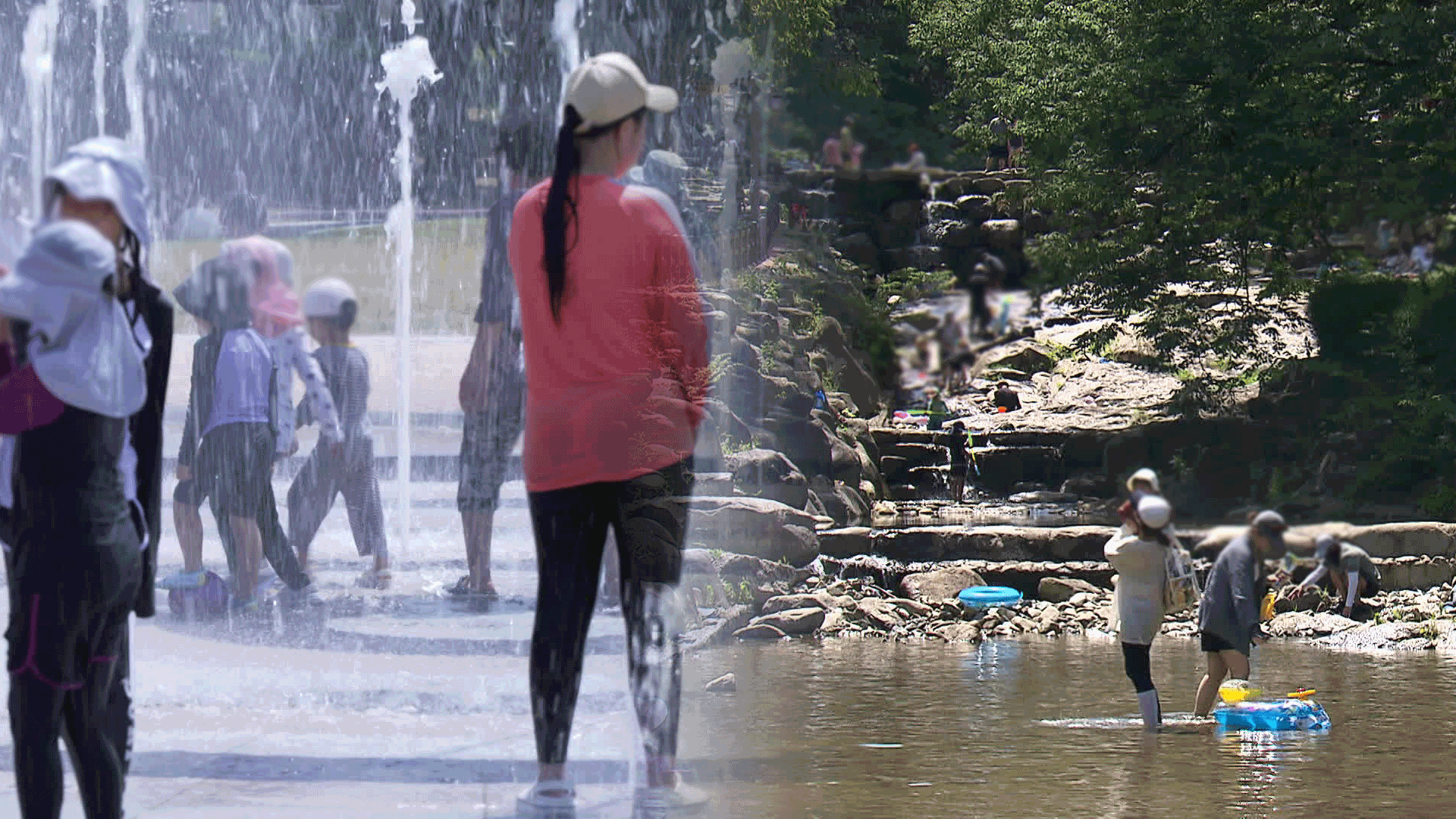Eco-friendly materials on the rise: Cactus leather and mushroom-based packaging
입력 2024.11.05 (01:37)
읽어주기 기능은 크롬기반의
브라우저에서만 사용하실 수 있습니다.
[Anchor]
These days, eco-friendly consumption is trending, and products made from plant-based materials instead of animal-based materials are being released one after another.
From cactus leather to packaging materials made from mushrooms, reporter Lee Soo-yeon has covered the rapidly evolving eco-friendly materials market.
[Report]
Designers are making phone cases.
The material used here is fabric made from cactus.
It feels like leather, but it is water-resistant and scratch-proof.
Fiber is extracted from cactus leaves, which were previously discarded, to create an environmentally friendly fabric.
It is tougher than cowhide and costs about half as much.
They are collaborating with various companies to create eco-friendly products.
[Jeon In-ho/CEO of Green Continue: "The key for consumers is not that it is eco-friendly, but that they bought it because the product is beautiful, and when they realize, 'Oh, this is eco-friendly,' they feel even more attracted to it."]
Not only cactus, but also byproducts rich in fiber, such as sweet potatoes and tangerine peels, can be used to make vegan leather.
Products using mycelium, which can be considered the root system of mushrooms, are also set to be released soon.
The global vegan leather market was valued at $720 million last year, growing over 20% in five years.
[Ahn Gi-hong/Researcher at the Rural Development Administration: "As a natural material, it does not use water or harmful chemicals to humans at all, making it eco-friendly. It can also be said to be free from animal ethics."]
Eco-friendly packaging materials to replace styrofoam are already in the production stage.
It is expected that securing a large quantity of mushroom mycelium, which is currently discarded as waste, will also enhance price competitiveness.
[Jeong Seong-il/CEO of Earth Foam: "Various agricultural byproducts that cost significant money and energy can be transformed into our raw materials, and by expanding the raw materials, we can achieve price competitiveness."]
As companies face increasing environmental costs due to climate change, the eco-friendly materials market is expected to grow even larger.
KBS News, Lee Soo-yeon.
These days, eco-friendly consumption is trending, and products made from plant-based materials instead of animal-based materials are being released one after another.
From cactus leather to packaging materials made from mushrooms, reporter Lee Soo-yeon has covered the rapidly evolving eco-friendly materials market.
[Report]
Designers are making phone cases.
The material used here is fabric made from cactus.
It feels like leather, but it is water-resistant and scratch-proof.
Fiber is extracted from cactus leaves, which were previously discarded, to create an environmentally friendly fabric.
It is tougher than cowhide and costs about half as much.
They are collaborating with various companies to create eco-friendly products.
[Jeon In-ho/CEO of Green Continue: "The key for consumers is not that it is eco-friendly, but that they bought it because the product is beautiful, and when they realize, 'Oh, this is eco-friendly,' they feel even more attracted to it."]
Not only cactus, but also byproducts rich in fiber, such as sweet potatoes and tangerine peels, can be used to make vegan leather.
Products using mycelium, which can be considered the root system of mushrooms, are also set to be released soon.
The global vegan leather market was valued at $720 million last year, growing over 20% in five years.
[Ahn Gi-hong/Researcher at the Rural Development Administration: "As a natural material, it does not use water or harmful chemicals to humans at all, making it eco-friendly. It can also be said to be free from animal ethics."]
Eco-friendly packaging materials to replace styrofoam are already in the production stage.
It is expected that securing a large quantity of mushroom mycelium, which is currently discarded as waste, will also enhance price competitiveness.
[Jeong Seong-il/CEO of Earth Foam: "Various agricultural byproducts that cost significant money and energy can be transformed into our raw materials, and by expanding the raw materials, we can achieve price competitiveness."]
As companies face increasing environmental costs due to climate change, the eco-friendly materials market is expected to grow even larger.
KBS News, Lee Soo-yeon.
■ 제보하기
▷ 카카오톡 : 'KBS제보' 검색, 채널 추가
▷ 전화 : 02-781-1234, 4444
▷ 이메일 : kbs1234@kbs.co.kr
▷ 유튜브, 네이버, 카카오에서도 KBS뉴스를 구독해주세요!
- Eco-friendly materials on the rise: Cactus leather and mushroom-based packaging
-
- 입력 2024-11-05 01:37:43

[Anchor]
These days, eco-friendly consumption is trending, and products made from plant-based materials instead of animal-based materials are being released one after another.
From cactus leather to packaging materials made from mushrooms, reporter Lee Soo-yeon has covered the rapidly evolving eco-friendly materials market.
[Report]
Designers are making phone cases.
The material used here is fabric made from cactus.
It feels like leather, but it is water-resistant and scratch-proof.
Fiber is extracted from cactus leaves, which were previously discarded, to create an environmentally friendly fabric.
It is tougher than cowhide and costs about half as much.
They are collaborating with various companies to create eco-friendly products.
[Jeon In-ho/CEO of Green Continue: "The key for consumers is not that it is eco-friendly, but that they bought it because the product is beautiful, and when they realize, 'Oh, this is eco-friendly,' they feel even more attracted to it."]
Not only cactus, but also byproducts rich in fiber, such as sweet potatoes and tangerine peels, can be used to make vegan leather.
Products using mycelium, which can be considered the root system of mushrooms, are also set to be released soon.
The global vegan leather market was valued at $720 million last year, growing over 20% in five years.
[Ahn Gi-hong/Researcher at the Rural Development Administration: "As a natural material, it does not use water or harmful chemicals to humans at all, making it eco-friendly. It can also be said to be free from animal ethics."]
Eco-friendly packaging materials to replace styrofoam are already in the production stage.
It is expected that securing a large quantity of mushroom mycelium, which is currently discarded as waste, will also enhance price competitiveness.
[Jeong Seong-il/CEO of Earth Foam: "Various agricultural byproducts that cost significant money and energy can be transformed into our raw materials, and by expanding the raw materials, we can achieve price competitiveness."]
As companies face increasing environmental costs due to climate change, the eco-friendly materials market is expected to grow even larger.
KBS News, Lee Soo-yeon.
These days, eco-friendly consumption is trending, and products made from plant-based materials instead of animal-based materials are being released one after another.
From cactus leather to packaging materials made from mushrooms, reporter Lee Soo-yeon has covered the rapidly evolving eco-friendly materials market.
[Report]
Designers are making phone cases.
The material used here is fabric made from cactus.
It feels like leather, but it is water-resistant and scratch-proof.
Fiber is extracted from cactus leaves, which were previously discarded, to create an environmentally friendly fabric.
It is tougher than cowhide and costs about half as much.
They are collaborating with various companies to create eco-friendly products.
[Jeon In-ho/CEO of Green Continue: "The key for consumers is not that it is eco-friendly, but that they bought it because the product is beautiful, and when they realize, 'Oh, this is eco-friendly,' they feel even more attracted to it."]
Not only cactus, but also byproducts rich in fiber, such as sweet potatoes and tangerine peels, can be used to make vegan leather.
Products using mycelium, which can be considered the root system of mushrooms, are also set to be released soon.
The global vegan leather market was valued at $720 million last year, growing over 20% in five years.
[Ahn Gi-hong/Researcher at the Rural Development Administration: "As a natural material, it does not use water or harmful chemicals to humans at all, making it eco-friendly. It can also be said to be free from animal ethics."]
Eco-friendly packaging materials to replace styrofoam are already in the production stage.
It is expected that securing a large quantity of mushroom mycelium, which is currently discarded as waste, will also enhance price competitiveness.
[Jeong Seong-il/CEO of Earth Foam: "Various agricultural byproducts that cost significant money and energy can be transformed into our raw materials, and by expanding the raw materials, we can achieve price competitiveness."]
As companies face increasing environmental costs due to climate change, the eco-friendly materials market is expected to grow even larger.
KBS News, Lee Soo-yeon.
-
-

이수연 기자 isuyon@kbs.co.kr
이수연 기자의 기사 모음
-
이 기사가 좋으셨다면
-
좋아요
0
-
응원해요
0
-
후속 원해요
0















이 기사에 대한 의견을 남겨주세요.